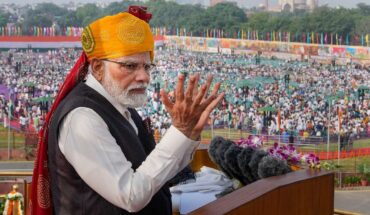In India, the private sector has never been given a monopoly in economic policies. Since independence, economic policies have remained under government patronage. However, the economic growth figures testify that the economic policies made, nurtured and increased under the patronage of the government, which is called the facade of socialism or the idea of creating a welfare state, gave a slow growth to the economic development of the country for a long time, while the need was for rapid economic growth. That is why we lagged behind developed countries in terms of economic development.
These days there is opposition to the economic policies of capitalism in America and there is a demand that the economy should now turn from capitalism to socialism. Since then, the discussion has started in all the major economies of the world that they also have to adopt a change or it is still delayed. In India, too, it has been heard loudly for some time that the number of capitalists in the country is increasing while poverty is not decreasing. This is not a surprise, but the result of the economic disparity created by capitalist economic policies. The opposition to capitalism in society is also justified by the fact that almost everywhere governments hand over the reins of economic development entirely to the private sector and sometimes even protect them in spite of their mistakes. And it’s all too common in America. There, usually big companies are bailed out by the government, as seen in the case of GM Motors, Citi Bank, etc. In 2005-06, everyone saw the American recession due to the wrong policies of the private sector. But here it is also necessary to think whether through socialism the economic development can be given the same speed which is given by the policies of capitalism? Perhaps not.
During the three decades from 1960 to 1990, average per capita income growth in India was only 1.6 per cent under government patronage of economic policies. Since 1990, it has been 3.6 percent. At the same time, the period from 2005 to 2010 was a period of rapid growth due to economic reforms, so the growth rate was 4.3 percent and since 2010, the per capita growth rate touched its maximum level of 4.9 percent due to the rapidly emerging image of India at the global level. It is pertinent to mention here that since 1991, liberalization was incorporated in Indian economic policies and government control continued to decline. Till 1975, the per capita income in India, China and Vietnam was almost equal but since 2000, the per capita income in China and Vietnam has increased by 35 to 50 per cent. Today, the per capita income in China is two and a half times higher than in India. The reason behind this is the late inclusion of liberalization in the economic policies in India and as a result the per capita income also increased after a while.
It is clear that economic growth increases very fast due to capitalist economic policies, then why there is opposition to it among the common people? One of the possible reasons for this is that governments protect the private sector to a great extent. In the case of the US, it can be understood as saving companies from going bankrupt many times, while in the case of India, the tax on financial income of individuals is comparatively much higher than the tax on profits of companies. This can be explained by economic data. Under the year 2023-24, the amount of tax from Indian companies was Rs. 9.3 lakh crore, which was 3.11 per cent of the GDP of the Indian economy. At the same time, the collection of personal income tax was around Rs 10.22 lakh crore, which was 3.45 per cent of GDP. Does this mean that Indian companies are making less profit and paying less tax? That’s a wrong concept. According to the latest data, the pre-tax profits of about 35,000 Indian companies have increased by about 144 per cent in the last five years. In addition, the profits of 5,000 companies listed on the stock market have increased by 186 per cent in the last five years, while the tax paid by them has increased by 35 per cent. Due to this continuing shortfall in corporate tax collections, it has fallen from 3.51 per cent of GDP to 3.11 per cent in the last 5 years. At the same time, the collection of personal tax has increased from 2.44 percent to 3.45 percent. The situation can also be explained with the conclusion that during the economic reforms of 1991, the tax rate on companies was 45 per cent, which has been reduced to just half at present. However, the main reason behind this reduction is to bring the products of Indian companies at a competitive price in the global market. Whereas in the public mind, companies have to be protected more and because of this, governments always have a soft attitude towards companies. However, the general perception is that companies are excessively protected, and this softer stance by the government towards companies prompts the public to once again turn towards socialism in their view of economic development.
In the context of India, it is essential to consider any changes in economic policies under the umbrella of democracy. The truth is that India has never fully adopted the model of capitalism. It has always tried to maintain the image of a welfare state. This aspect has led to significant contradictions in current politics, leaving the public unsure whether welfare state policies are for their development or just a means to entice them. Some see it as economic policies made for social and public welfare by the government, while others refer to it as mere giveaways. Consequently, many statistics indicate that due to the image of a welfare state, the rapidly increasing fiscal deficit and the growing financial debt of states on the center, along with their total dependency on the central government, point towards their economic decline. So, should governments do nothing for the welfare state? In this context, it is also necessary to mention the pension policies for government employees. In the last 24 years, a second new pension policy for government employees has been introduced, showing the government’s responsibility towards its employees and their families. On the other hand, why have governments not yet been able to similarly encourage the private sector? This remains a question that persists among the public, reinforcing the belief in the welfare state model for their economic development.
Dr. P S Vohra is a Writer, columnist and financial thinker, View are personal.






